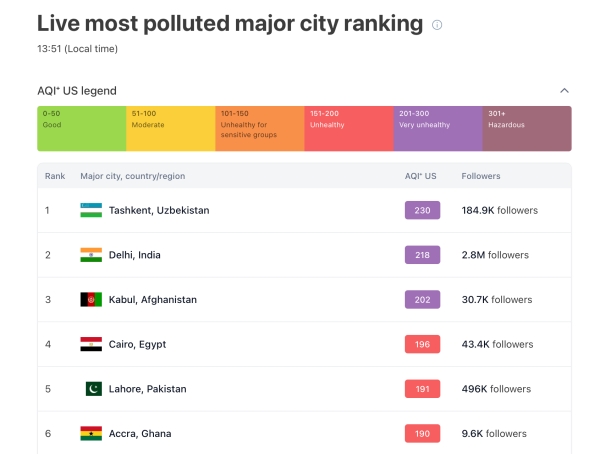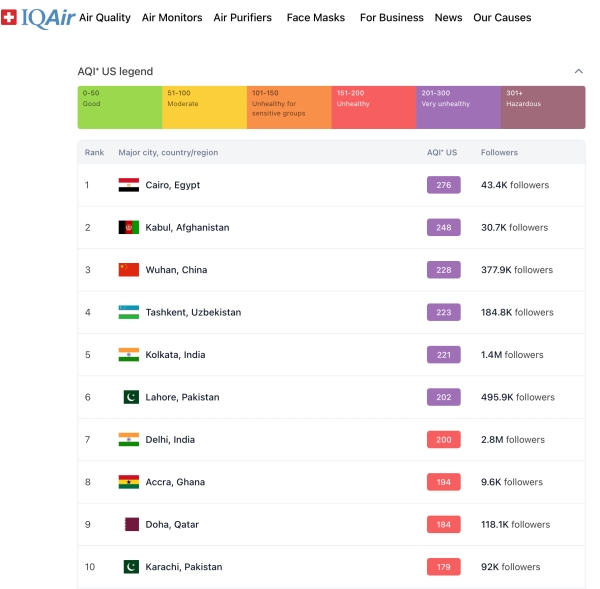Tashkent, the capital of Uzbekistan, has topped the global air pollution rankings according to the IQAir portal, with the concentration of fine PM2.5 particles reaching “extremely harmful” levels. As of 8:00 AM on December 27, the city’s air quality was the worst in the world, with PM2.5 levels 39.9 times higher than the World Health Organization’s recommended annual average.

The situation improved slightly with Tashkent briefly dropping to 8th place around 9:30 AM before rising back to the top position by noon. This fluctuation highlights the persistent environmental challenges the city continues to face since the beginning on 2024.
The primary sources of pollution in Tashkent include car exhaust emissions, industrial activities, and the burning of fuel for heating during the winter months. Local authorities have acknowledged the urgent need for action to address these concerns, emphasizing the importance of infrastructure upgrades, public transport development, and a shift away from reliance on hydrocarbon fuels.

The severe pollution levels in Tashkent are having a detrimental effect on the health of its residents. PM2.5 particles can irritate the respiratory system, exacerbating conditions like asthma and bronchitis, while increasing the risk of chronic lung diseases. Prolonged exposure to polluted air is also linked to a higher risk of heart attacks and strokes. The pollution lowers the body’s resistance to infections, posing additional risks for vulnerable populations such as children and the elderly.
The air pollution crisis is also affecting the social and economic fabric of Tashkent. Increased health problems related to poor air quality are causing higher rates of sick leave, affecting workforce productivity. The medical costs associated with treating pollution-related health conditions are straining the healthcare system and placing a financial burden on families. The constant exposure to harmful air quality is also taking a toll on the mental well-being of residents. Anxiety and stress levels have risen, particularly as the situation appears to worsen with few immediate solutions in sight.
Certain groups are especially at risk from the polluted air. Children are more susceptible to asthma, allergies, and hindered lung development, while the elderly experience greater incidence of chronic diseases and reduced life expectancy. Pregnant women also face heightened risks, with pollution increasing the likelihood of pregnancy complications and developmental issues for the fetus.
In response to the hazardous air quality, many residents are taking protective steps, such as wearing masks, using air purifiers at home, and limiting outdoor activities during peak pollution periods.
This is not the first time Tashkent has experienced severe air pollution. In August, the city reported PM2.5 concentrations that were 5.4 times higher than the WHO’s recommended levels. Similarly, in February, Tashkent once again topped the IQAir rankings with extremely harmful air quality levels.




